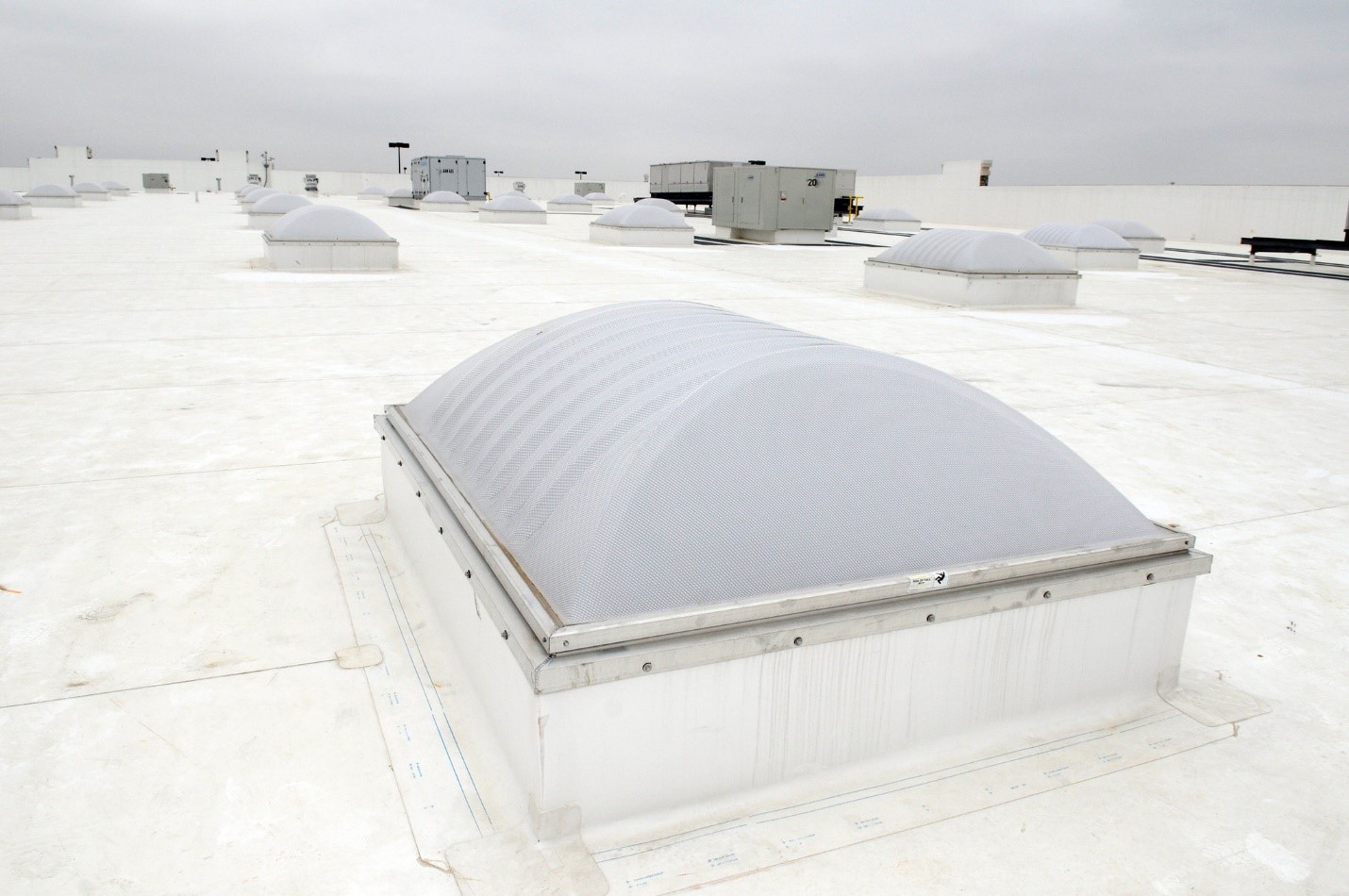Regional modeling compares roofing strategies during an extreme heatwave in Chicago.
The Science
Cool, green, and solar roofing strategies have proven effective in reducing urban heat islands, which are areas where buildings, pavement, and other surfaces absorb and retain heat. Benefits have been shown at the building or neighborhood scale in urban areas. In this study, scientists introduced a regional modeling tool to determine the impact of these roofing strategies in the Chicago metropolitan area. The model simulated the Chicago area during an extreme heat wave.
Scientists ran model simulations and estimated the impacts on near-surface temperature and urban heat islands and measured the impact on energy demand for different roofing strategies: cool (painted a heat-reflecting white), green (vegetation), and solar roofing. They found that cool, green, and solar panels reduce near-surface temperatures and air condition consumption demand during the day when air temperature is the highest.

The Impact
This study shows that large-scale deployment of roofing technology can reduce near-surface temperatures, mitigate urban heat islands, and reduce energy consumption. Results can be used to develop sustainable approaches to enhance urban resilience by lowering summertime temperatures and energy demand. In the long term, the approach can also help minimize greenhouse gas emissions in the Chicago area.
Summary
Warming trends have increased in Chicago in recent decades. In 1995, an extreme Chicago heat event caused the highest mortality rates recorded during a U.S. heatwave. In this study, scientists demonstrated that wide-scale cooling, green, and solar panel roofing can reduce temperatures in the Chicago area, lowering health risks and reducing climate impact.
Scientists ran high-resolution model simulations to compare scenarios for installing three roofing strategies during a Chicago heatwave in August 2021. They employed a Weather Research and Forecasting regional climate model with a multilayer building system and roof parameterizations over the Chicago area. An integrated spatial model of local climate zones was created to provide an accurate description of advanced urban geometry.
Models show that widescale deployment of cool roofs has the best potential for cooling and energy savings, followed by green roofing and solar panels respectively. The cool roof experiment was the only one where near-surface temperatures trended down as the urban fraction increased, indicating that cool roofs are also the most cost-effective of the three strategies. For cooling energy consumption, it can be reduced by 16.6%, 14.0%, and 7.6% when cool, green, and solar panel roofs are deployed, respectively. Although solar panel roofs show the smallest reduction in energy consumption, if it is assumed that all electricity production can be applied to cooling demand, scientists can expect savings of almost half (46.7%) on cooling energy demand.
PRINCIPAL INVESTIGATOR
Rao Kotamarthi
Argonne National Laboratory
[email protected]
CO-PRINCIPAL INVESTIGATOR
Haochen Tan
Argonne National Laboratory
[email protected]
PROGRAM MANAGER
Sally McFarlane
U.S. Department of Energy, Biological and Environmental Research (SC-33)
Urban Integrated Field Laboratories
[email protected]
Funding
This study is supported by Coastal Observations, Mechanisms, and Predictions Across Systems and Scales–Great Lakes Modeling, a multi-institutional project supported by the Biological and Environmental Research (BER) program within the U.S. Department of Energy’s Office of Science as part of the Regional and Global Model Analysis program, MultiSector Dynamics Modeling program, and Earth System Model Development program. Support was also received from the Community Research on Climate and Urban Science (CROCUS) project funded by BER under contract number DE-FOA-0002581.
References
Tan, H., et al. “Impact of Different Roofing Mitigation Strategies on Near-Surface Temperature and Energy Consumption over the Chicago Metropolitan Area During a Heatwave Event.” Science of the Total Environment 860 160508 (2023). https://doi.org/10.1016/j.scitotenv.2022.160508.


